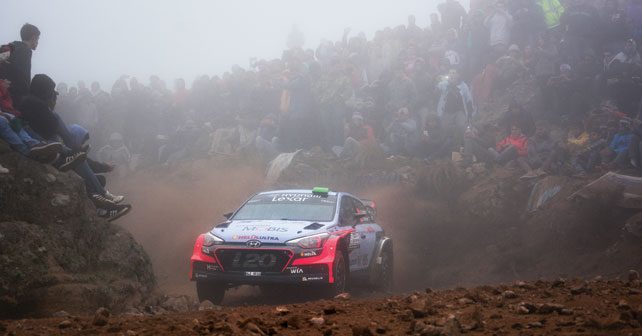Hyundai claimed a hard-fought victory at Rally Mexico, although the win left defending WRC champion Sebastien Ogier seething and started a debate about rally running orders.
Creating an even playing field is considered to be next to impossible, be it even the most everyday aspect of life. And most certainly so in the world of motorsport. Balancing the will of competitors and manufacturers to push to their absolute limit to dominate proceedings with the need to entertain the viewing public who are hankering for tight battles is almost never achieved naturally.
Rule-makers play a huge role in this as is very evident in Formula 1, the World Endurance Championship and most notably in the World Touring Car Championship where ‘success ballast’ means the driver who jumps out into an early championship lead has weight added to his car proportionate to the points scored.
Now while the World Rally Championship has not gone to such drastic lengths, the idea of having the championship leaders start rallies before anyone else does put them at a distinct disadvantage that they then have to overcome. It is this disadvantage that three-time defending WRC champion Sebastien Ogier was extremely vocal about after Rally Argentina when he was unable to close up on Hyundai’s Hayden Paddon, who turned out to be the fastest of the drivers who benefitted from Ogier playing the role of a ‘sweeper’.
With a lot of the loose soil, stones and rocks cleared from the stages, Paddon’s i20 WRC was able to open up a big enough lead that the Frenchman simply could not overcome no matter how hard he tried.
And while it certainly meant that it got rally fans excited who delighted in the uncertainty of whether Ogier could actually pull it off – as well as allowing a different driver on the top step of the podium – one would hardly call it pure rallying.
Previous attempts at being fair to decide the start orders have included allowing drivers to choose their own starting slots based on their performance in rally shakedowns. Qualifying stages too were employed to pick who got the pick of the starting order.
For now, though, it seems as if the FIA is firm on mixing things enough by creating an obstacle for the championship leader to overcome. The logic being if a driver is fast enough, then let him push and earn a win.
While this may not sit well with Ogier and some purists, Paddon just lapped it up. Not to mention that the i20 WRC has finally reached a point in its development where the New Zealander can actually create enough headaches for the mighty Volkswagen squad. With VW, Citroen and Toyota heavily invested in developing their 2017 machines, Hyundai is hoping to sneak in some more good results by pushing the envelope in 2016.
Other drivers and teams would be well advised to do so as well before the upgraded beasts from the big three manufacturers hit rally stages next year. With over 400bhp on tap from these new machines and more grip provided through a wider track, the FIA has even gone so far as to announce a screening process to choose which driver will be allowed to drive these cars. Speed and stage records are expected to tumble next year, much like with F1’s impending rule changes to make their cars faster.
Some cynics may well wonder if that will mean incident prone drivers like Jari-Matti Latvala will be told to keep their hands off these new cars! One can only hope that no one goes too far in pushing the envelope.























Write your Comment